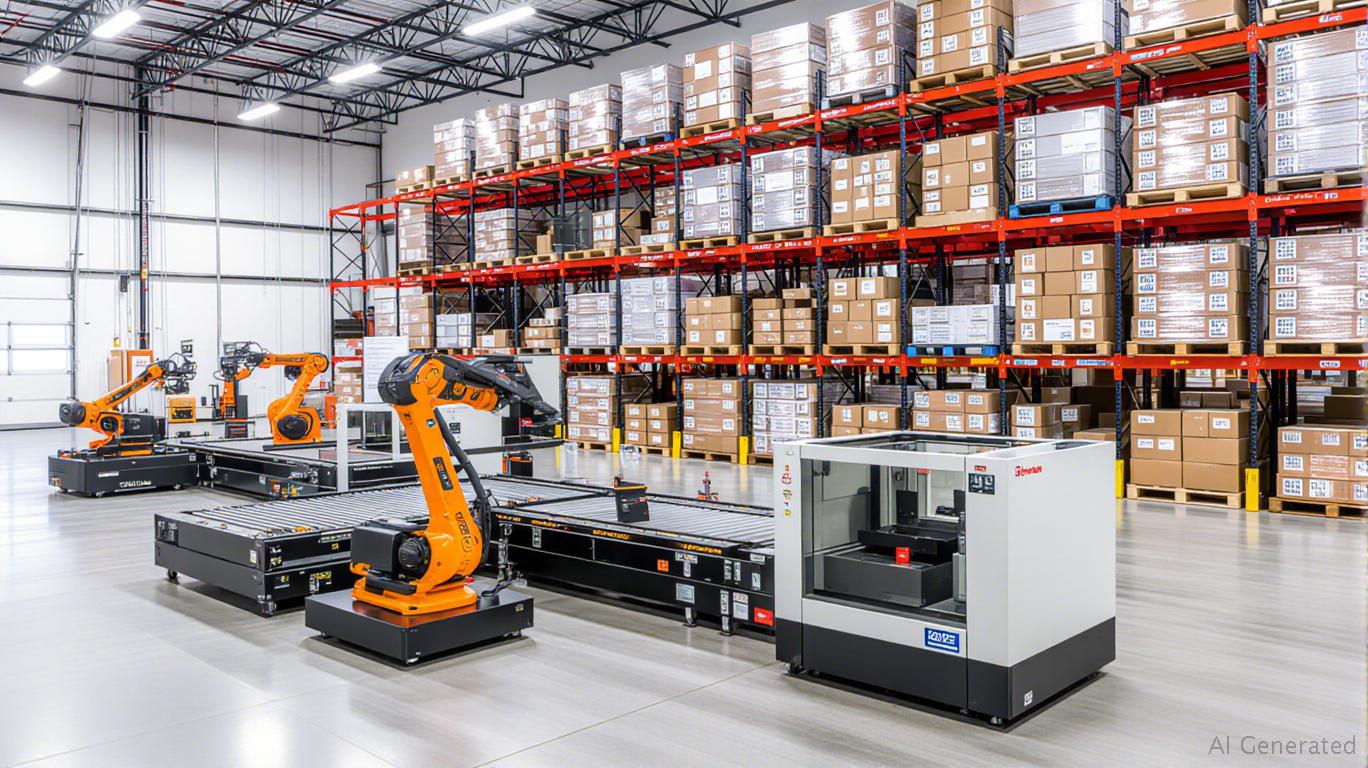Honeywell's Bold Move to Simplify Portfolio: A Play for Automation Dominance?
Honeywell International (NYSE: HON) has unveiled a critical strategic shift, putting its Productivity Solutions and Services (PSS) and Warehouse and Workflow Solutions (WWS) divisions under review for potential spin-offs or sales. The move underscores the industrial conglomerate's broader ambition to simplify its portfolio ahead of its planned separation into three standalone companies by late 2026. For investors, this decision raises a central question: Is Honeywell's focus on shedding non-core assets a shrewd maneuver to maximize shareholder value, or a risky pivot that risks diluting its current revenue streams?

The Rationale: Sharpening the Focus on High-Margin Automation
Honeywell's CEO Vimal Kapur has framed this decision as essential to becoming a “pure-play automation leader.” The PSS and WWS divisions—collectively generating ~$2 billion in annual revenue—serve markets like transportation logistics and warehouse management. While profitable, these segments are not aligned with Honeywell's vision of dominating automation in buildings, process industries, and industrials, which it views as higher-growth and higher-margin areas.
The automation sector is a $400 billion market growing at ~5% annually, driven by energy transition demands (e.g., smart grids, industrial decarbonization) and the need for advanced robotics in manufacturing. By offloading PSS and WWS,
aims to concentrate resources on its Process Automation division, where it has invested heavily in software and AI-driven solutions for refining, chemicals, and power generation.Timing: A Precursor to the Spin-Offs
The strategic review comes as Honeywell prepares to split into three entities by mid-2026:
1. Automation Solutions: Focused on buildings, process industries, and energy transition.
2. Honeywell Aerospace: Serving commercial, defense, and space markets.
3. Solstice Advanced Materials: Specializing in sustainable refrigerants and chemicals.
By evaluating PSS and WWS now, Honeywell ensures that the Automation division—its crown jewel—will emerge as a lean, focused entity with no distractions from logistics or warehouse tech. This separation also avoids complicating the timeline for Solstice's spin-off in early 2026 and the Aerospace spin later that year.
Risks and Rewards for Shareholders
The move carries both upside and uncertainty:
- Upside: A sale or spin-off could unlock ~$2 billion in revenue from non-core assets, potentially boosting margins for the remaining divisions. Honeywell's stock has historically rallied when it simplifies its portfolio—its 2016 spin-off of its safety business into SimpliPhi saw its shares climb 20% in the following year.
- Downside: There's no guarantee the PSS/WWS review will yield a transaction. If Honeywell fails to monetize these divisions, its revenue base could shrink without a clear offset.
Investment Thesis: A High-Reward Play on Automation
For long-term investors, the strategic review aligns with a compelling thesis:
1. Margin Expansion: Automation is a high-margin business (est. 20%+ EBIT margins vs. ~15% for logistics/warehouse). Shedding lower-margin PSS/WWS could boost overall profitability.
2. Energy Transition Tailwinds: Honeywell's Process Automation division is well-positioned to serve the $1.2 trillion energy transition market, which demands advanced control systems for renewable energy grids and carbon capture projects.
3. Strategic Acquisitions: Proceeds from any sale could fund bolt-on acquisitions in automation software or industrial IoT, accelerating growth.
Conclusion: A Necessary Evolution
Honeywell's decision to evaluate PSS and WWS is a bold step toward becoming a dominant automation player. While the near-term path carries execution risks, the long-term vision—streamlining into three focused, high-margin entities—is sound. Investors should monitor the progress of this review and the separation process, but the stock's ~15x 2026E EV/EBITDA suggests it's pricing in some uncertainty. A successful execution could unlock a 20-30% premium to current valuations, making
a speculative but high-reward play for investors willing to bet on industrial automation's future.Sign up for free to continue reading
By continuing, I agree to the
Market Data Terms of Service and Privacy Statement

Comments
No comments yet